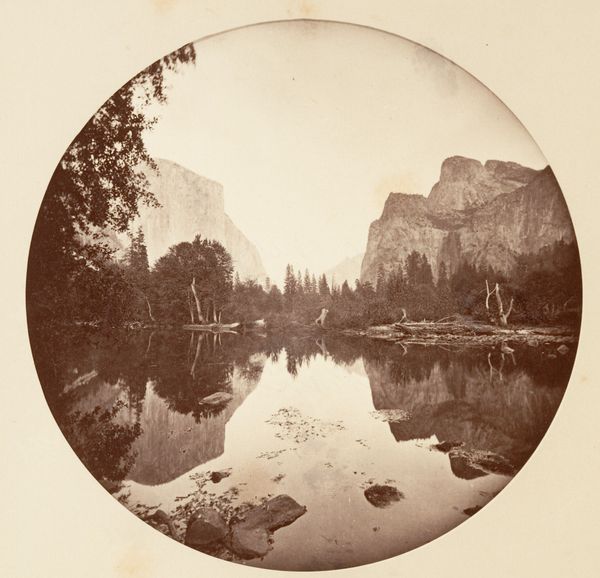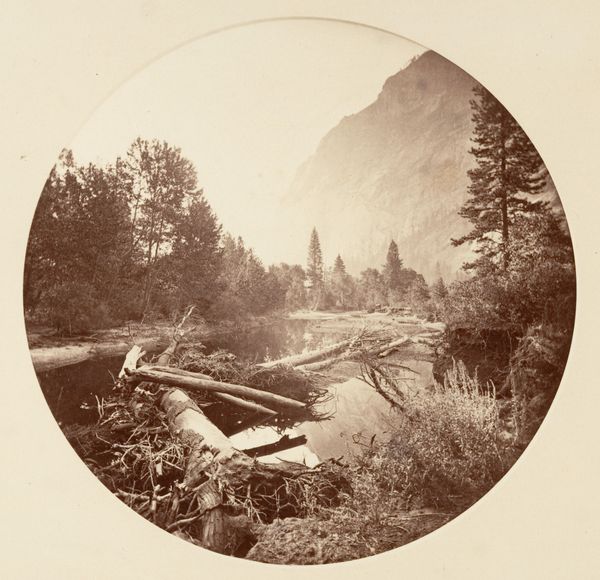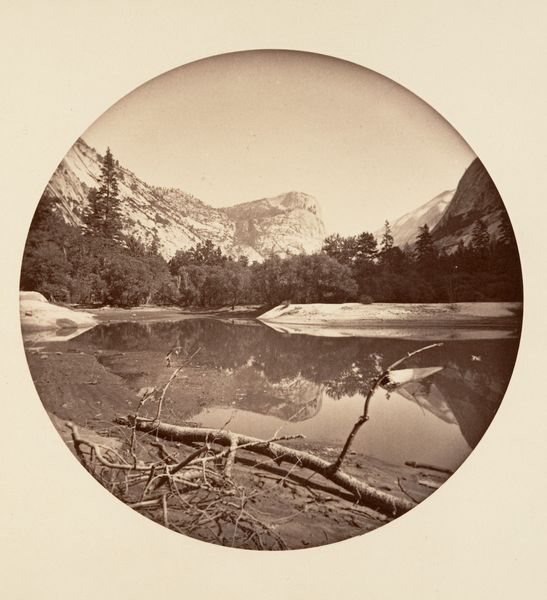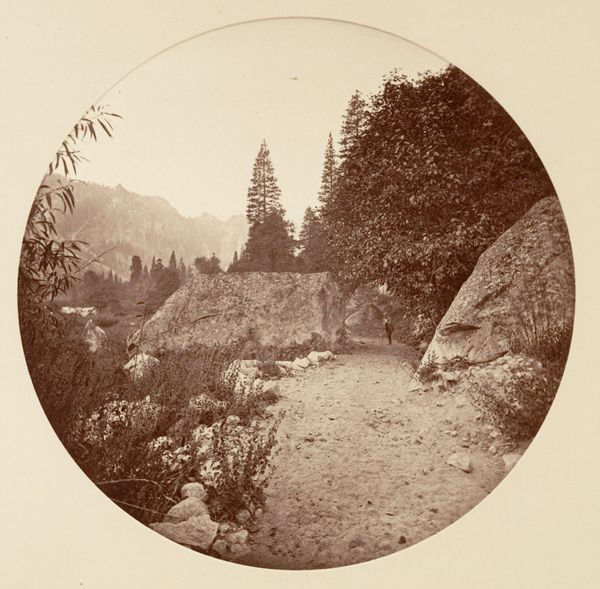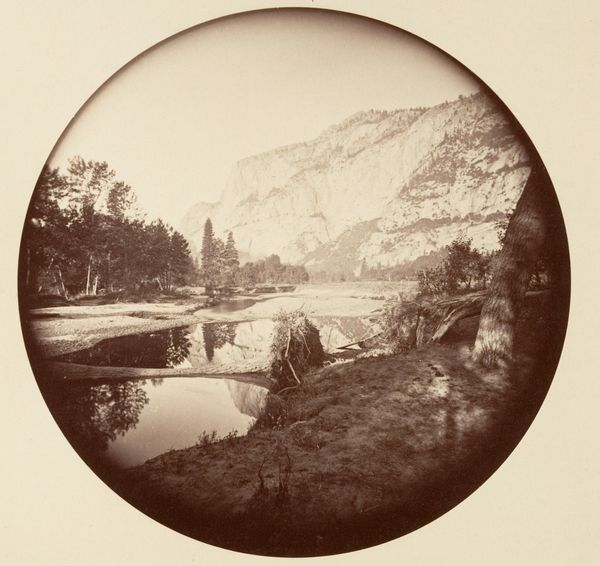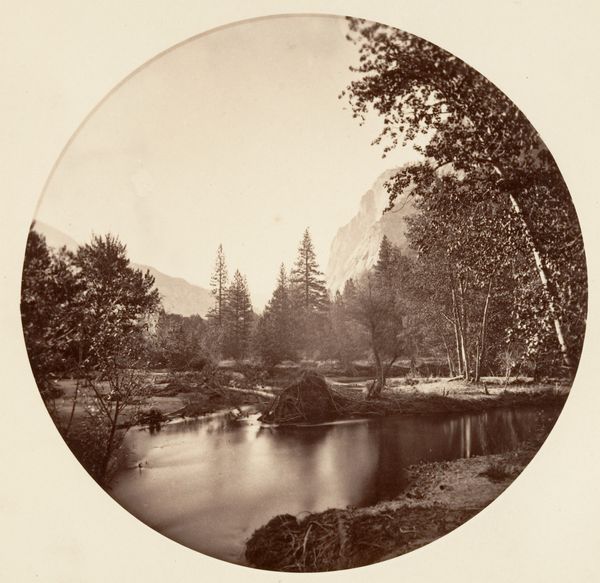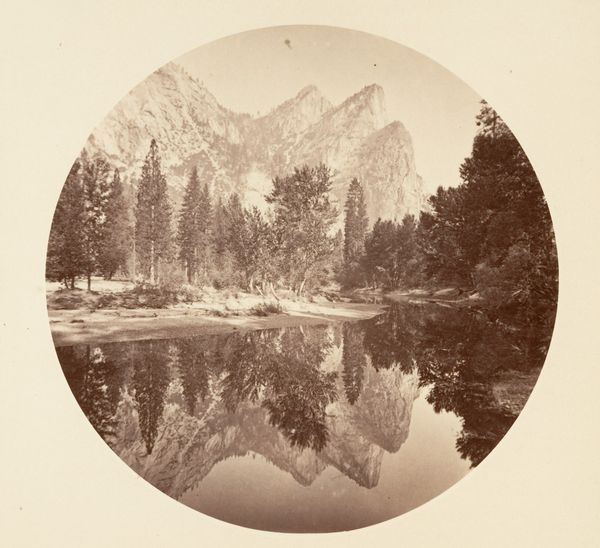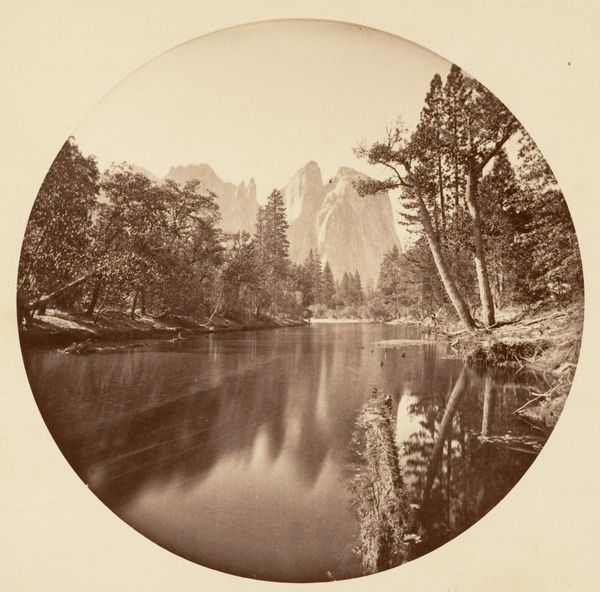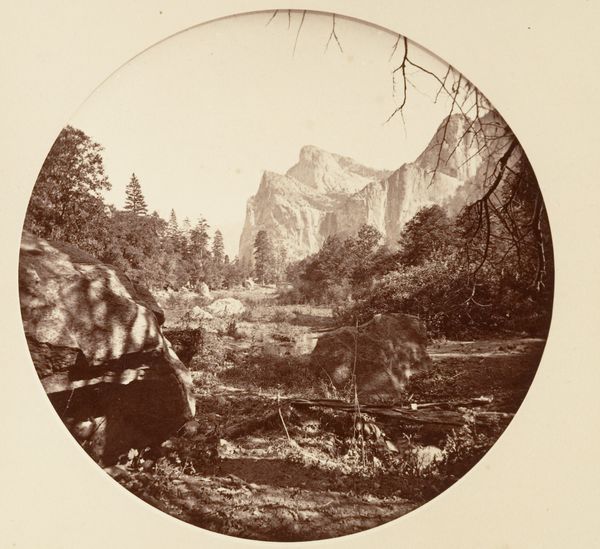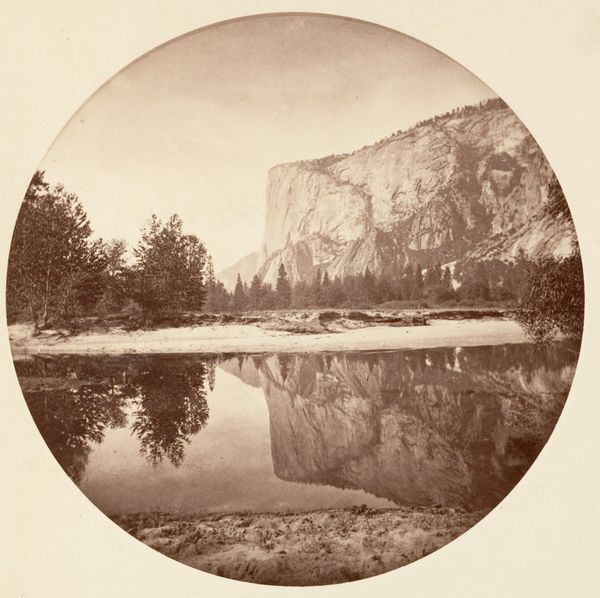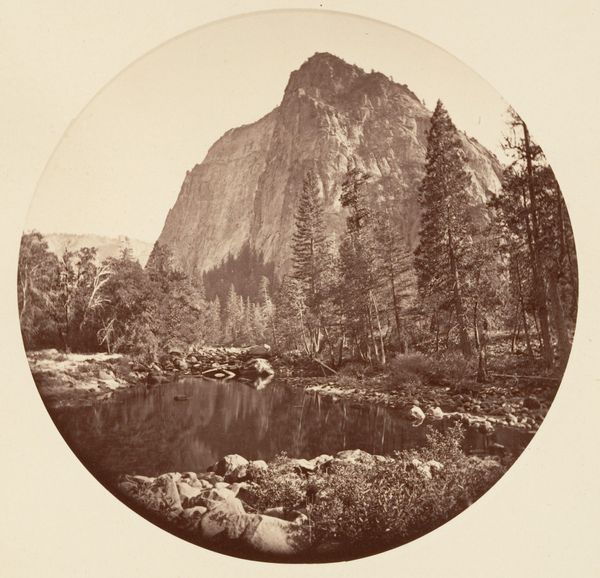![[Yosemite National Park, California] by Carleton E. Watkins](/_next/image?url=https%3A%2F%2Fd2w8kbdekdi1gv.cloudfront.net%2FeyJidWNrZXQiOiAiYXJ0ZXJhLWltYWdlcy1idWNrZXQiLCAia2V5IjogImFydHdvcmtzLzg3NGEyYTM1LTdiMGEtNDkzYS1iYTQ2LTVhZTJlY2YzOTg3My84NzRhMmEzNS03YjBhLTQ5M2EtYmE0Ni01YWUyZWNmMzk4NzNfZnVsbC5qcGciLCAiZWRpdHMiOiB7InJlc2l6ZSI6IHsid2lkdGgiOiAxOTIwLCAiaGVpZ2h0IjogMTkyMCwgImZpdCI6ICJpbnNpZGUifX19&w=3840&q=75)
Dimensions: Image: 12.5 x 12.5 cm (4 15/16 x 4 15/16 in.), circular Album page: 24 x 25.1 cm (9 7/16 x 9 7/8 in.)
Copyright: Public Domain
Carleton Watkins made this photograph of Yosemite National Park in the 19th century, using the wet plate collodion process. Watkins's photographs, like this one, played a crucial role in the history of American wilderness. This view of the Merced River, with its sublime rock formations, spoke to the idea of untouched, pristine landscapes, and promoted the concept of environmental preservation. Watkins created this image at a time when the concept of National Parks was new, and a lot of land was being taken from Native Americans. Yosemite, like other national parks, existed at the intersection of preservation and commercialism. Watkins’s images were commissioned and sold, and they reinforced the 19th-century belief in the civilizing mission of the American West. The photograph, while beautiful, glosses over the social and political realities of the time. Historians can unpack these complexities by studying the context surrounding an artwork’s creation and reception. The photograph prompts us to reflect on the public role of art.
Comments
No comments
Be the first to comment and join the conversation on the ultimate creative platform.
